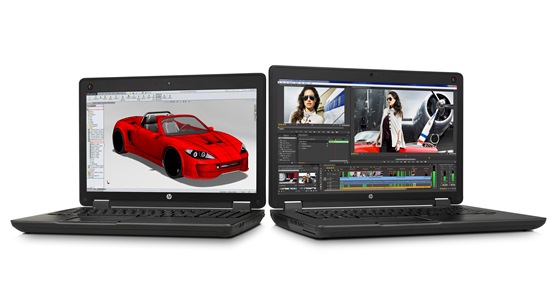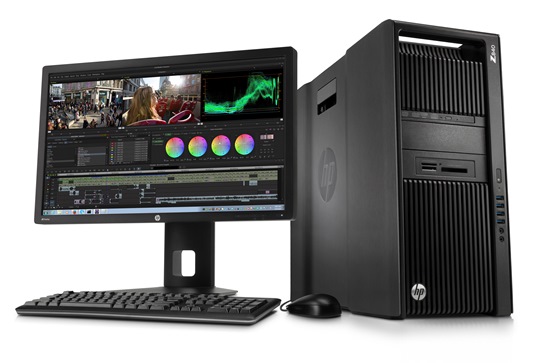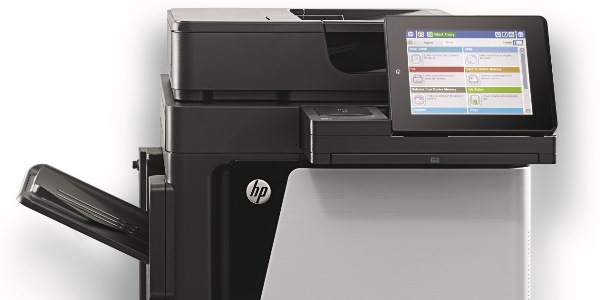When it comes of graphics and design shops the Mac is typically the machine of choice. Hewlett-Packard aims to change that with the revamp of its latest lineup of desktop and mobile workstations.

The HP ZBook 15 and ZNook 17 G2
The company’s new Z desktops and ZBook mobile workstations which were announced recently in For Collins, Colorado this month are designed to address the constraints brought about by increasing compute-heavy tasks in industries such as graphics design, digital imaging, architecture, manufacturing,, finance, media and entertainment, oil and gas exploration and healthcare.
“It’s interesting when you think about the new and greater spendability we have, lot of guys in these industries are hitting the wall from an IO perspective and a graphics perspective,” said Jeff Wood, vice president of worldwide product management for HP’s commercial solutions business unit, during a press briefing.” Certainly with the increased memory capability, you can think of the oil and gas analysts pulling petabytes of data. In order to conduct real-time visualization of that data they’re going to need data to be device-resident.”
He also said HPs new Z machines will enable artists that work with video to avoid bottlenecks when moving raw data into their workstations for review and manipulation.
Wood realizes it’s going to be difficult to convert diehard Mac users who have an almost “religious” dedication to Apple Inc. machines but he said the latest series of Z workstations offer compelling advanatges. The revamped portfolio includes:
- The new HP Z840, Z640 and Z440 desktops which come with the newest Intel Xeon processors, a choice of Nvidia or AMD professional grahics cards
- The new HP ZBook 15 G2 and 17 G2 mobile workstations benefit from enhanced processing including optional Intel quad-core processors, Nvidia Quadro and AMD FirePro graphics
- The lower end Z230 and the all-in-one Z1 workstation remain unchanged
“We’ve never had a better offer,” said Jim Zafarana, vice-president of HP’s commercial solutions unit.
He said HP’s desktop workstation development efforts were focused on beefing up performance while the laptops were designed to provide the optimum balance of performance and mobility.

The HP Z840 desktop workstation and 27-inch IPS display
The Z840, Z640 and Z440 desktops are expected to be available in Canada beginning late October with prices starting at $1,299, $1759 and $2,999 respectively.
The ZBook 15 G2 and ZBook 17 G2 laptops are expected to be available around late September with pricing starting at $1,499 and $1,749 respectively.
The ZBook 15 and 17 laptops come loaded with Haswell processors and Thunderbolt 2 connectivity. The machines also support Z Turbo Drive PCI flash storage. The 15 can support up to 2.2 TB of storage while the 17 can handle up to 3.2 TB.
The Z440 improves upon HPs top selling Z400 workstation which is a favourite in the healthcare sector where it is used as an interface with medical equipment such as CAT scan machine. The Z440 gains a new Haswell processor, added support for 128 GB of memory, carrying handles, extra USB 3.0 ports and other connectivity features and a new modular design that includes makes it easy to access and replace internal components without tools.
The Z640 is a move up for the Z600 desktop that is popular in the financial services sector. The newer machine bumps up memory to 256 GB.
The Z840 supports 160W processors and greater density RAM storage that supports up to 1TB of system memory and up to eight internal 2.5” drive bays. RAM will increase to 2TB when 128 GB dual in-line memory modules become available.
For its desktop workstations, HP has replaced Firewire connectivity with Thunderbolt 2 technology but is still allowing legacy applications requiring Firewire to add it through a third-party PCI card.
Lloyd S Cohen, director of worldwide market analysis for for analyst firm IDC , saiod HP has a “clear vision” when it comes to workstation startagy.
For istance, the company is the only workstation vendor in the all-in-one space.
“There’s an excess of one million MacPro installed worldwide,” he told CDN. “If HP or any workstation can convert MacPro users to a workstation it will grow TAM (total addressable market) for the workstation market.”
IDC does not consider MacPro machines as workstations because they are not certified as such, he clarified.
Cohen also said that HP faces some dounting challenges. Fo instance, Dell is placing greater emphasis on their workstation business and has a six-point strategy to retake the number one position in the market back from HP.
The analyst also identified Chinese manufacturer Lenovo as a “wild card” in the workstation business since it stands to gain “greater clout once the IBM/Lenovo x86 deal is finalized” by the end of this year.
He said Lenovo will be able to draw upon a large IBM x86 installed bases as sales leads.
“Finally HP is doing the right thing by having a strategic plan of going after the MacPro business,” Cohen said. “The only other thing they can do is to have incentives for high-end PC users to convert to a workstation.”






